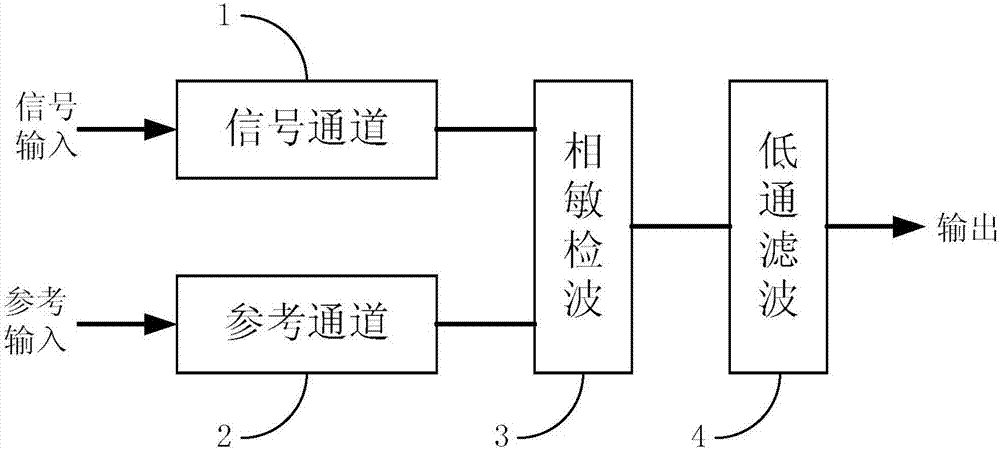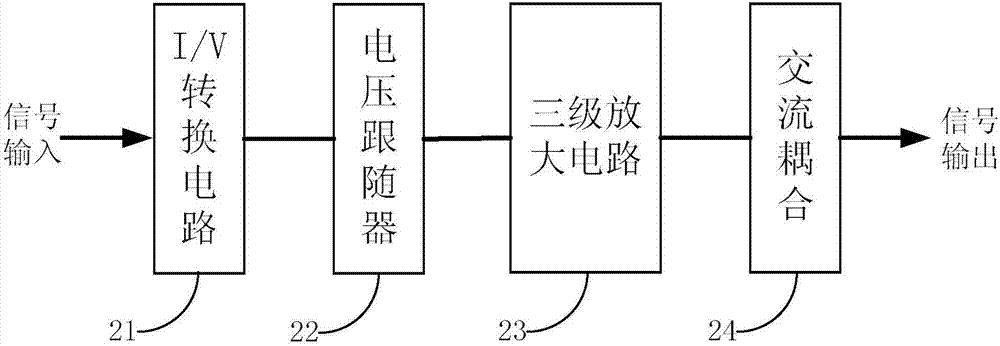Phase-locked amplifier for detecting weak photo-current signals
A lock-in amplifier and current signal technology, applied in the electronic field, can solve the problems of expensive, difficult-to-portable instruments, and large volume, and achieve the effects of low cost, wide frequency response range, and simple circuit structure
- Summary
- Abstract
- Description
- Claims
- Application Information
AI Technical Summary
Problems solved by technology
Method used
Image
Examples
Embodiment Construction
[0036] The present invention will be described in further detail and completely below in conjunction with the embodiments and accompanying drawings.
[0037] The lock-in amplifier is a synchronous correlation detector designed by using the principle of cross-correlation. Using the cross-correlation characteristics of the reference signal and the measured signal, the signal with the same frequency and phase as the reference signal is extracted from the measured signal. Lock-in amplifiers can be divided into analog lock-in amplifiers and digital lock-in amplifiers. According to the number of phase-sensitive detectors in lock-in amplifiers, they can also be divided into single-phase lock-in amplifiers and dual-phase lock-in amplifiers. The analog lock-in amplifier has the advantages of simple circuit structure and fast response speed. In addition, considering cost reduction, an analog single-phase lock-in amplifier is adopted in the present invention, such as figure 2 As shown ...
PUM
 Login to View More
Login to View More Abstract
Description
Claims
Application Information
 Login to View More
Login to View More - R&D
- Intellectual Property
- Life Sciences
- Materials
- Tech Scout
- Unparalleled Data Quality
- Higher Quality Content
- 60% Fewer Hallucinations
Browse by: Latest US Patents, China's latest patents, Technical Efficacy Thesaurus, Application Domain, Technology Topic, Popular Technical Reports.
© 2025 PatSnap. All rights reserved.Legal|Privacy policy|Modern Slavery Act Transparency Statement|Sitemap|About US| Contact US: help@patsnap.com



